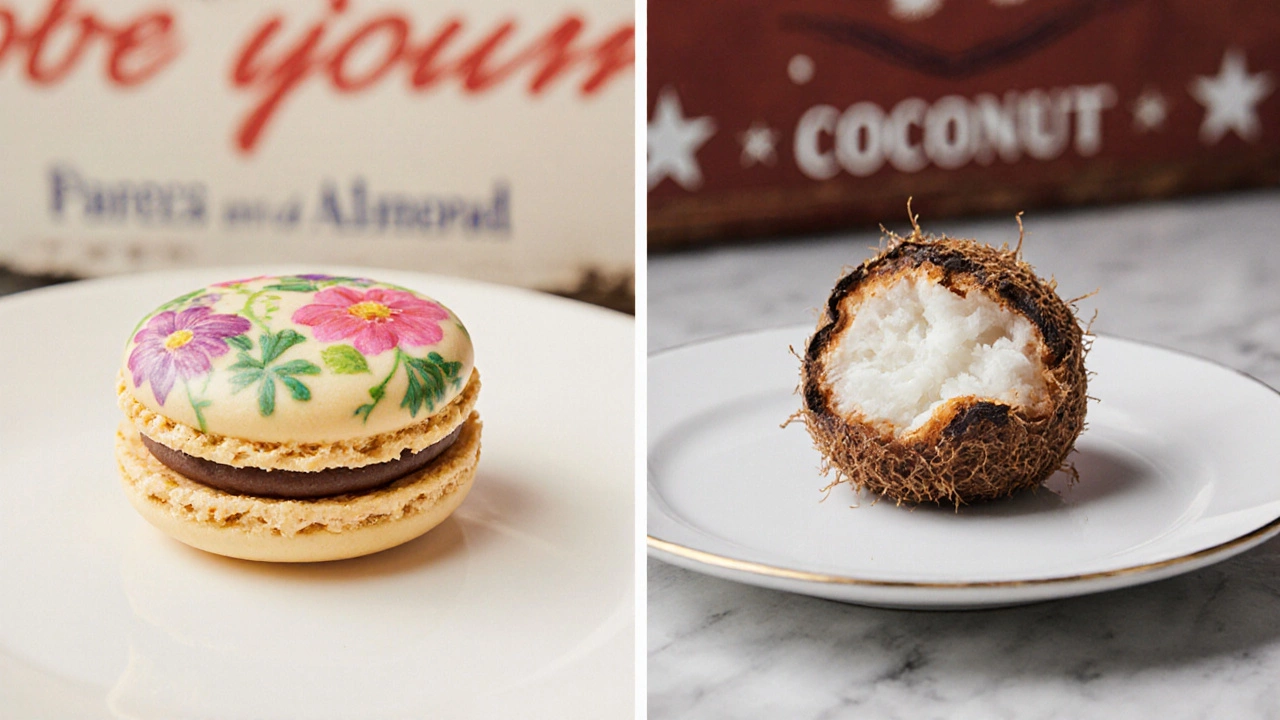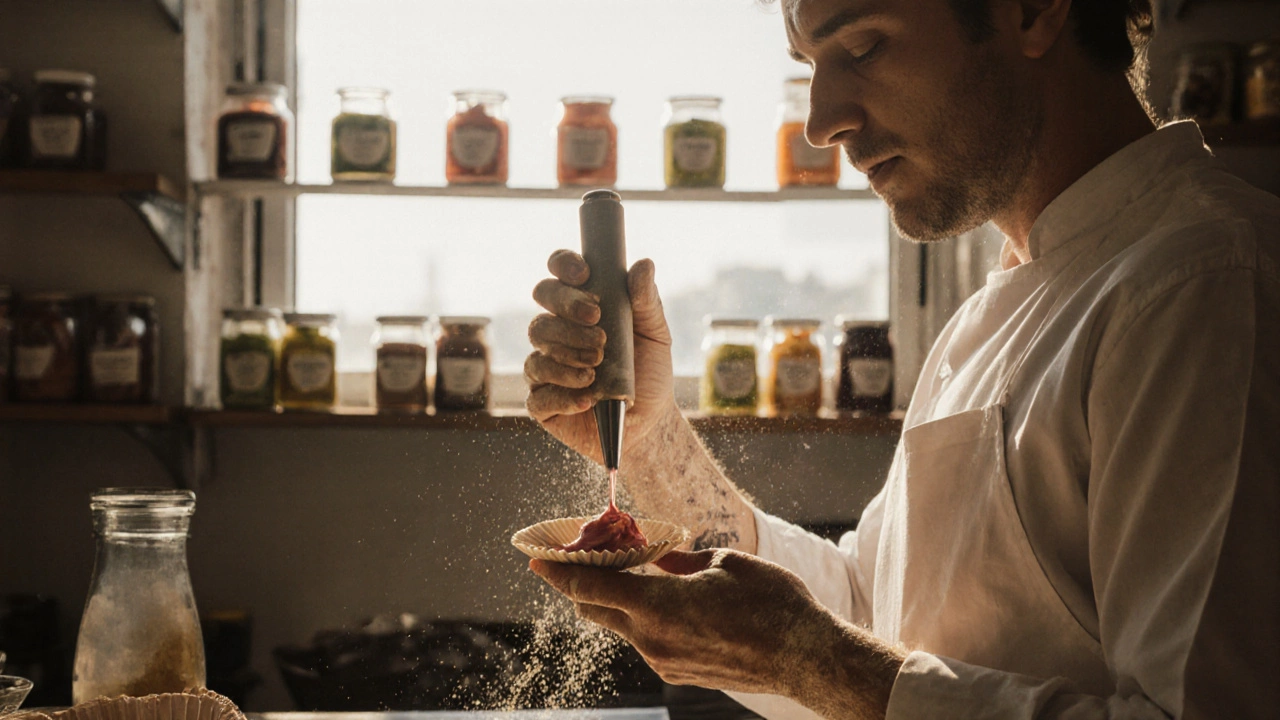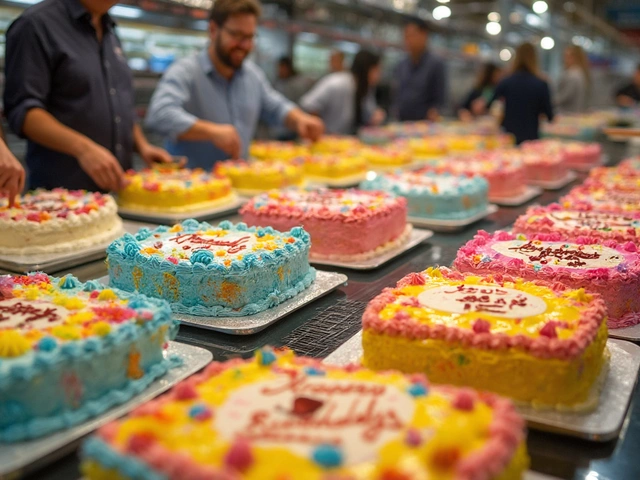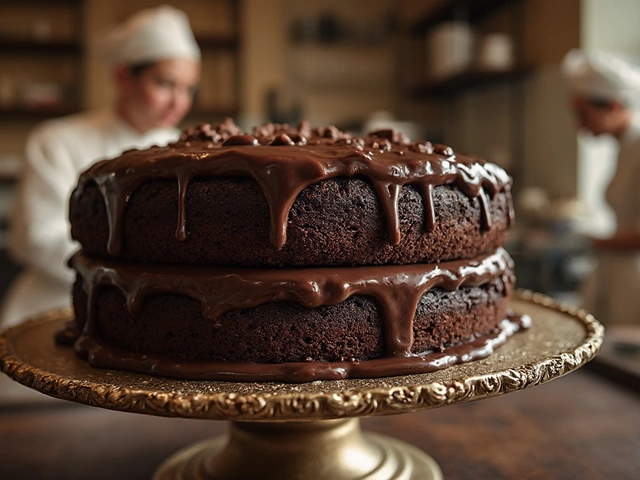
Macaron vs Macaroon Spelling Tool
Which spelling is correct for French almond cookies?
Ever seen a colorful, delicate cookie with a soft center and wondered, what does the word macarons actually mean? It’s not just a fancy dessert-it’s a word with history, confusion, and a lot of wrong spellings floating around. If you’ve ever bought a bag of coconut cookies labeled as macarons and been shocked by what you got, you’re not alone. The truth is, macarons aren’t what most people think they are. And that mix-up isn’t new-it’s been going on for over a century.
Macarons Are French, Not Coconut
The word macarons (pronounced mah-kah-ROHN) comes from the Italian word maccherone, which referred to a fine almond paste. When Italian chefs brought the recipe to France in the 1500s, it evolved. French bakers replaced the coarse almond meal with finely ground almonds, added egg whites, and created the light, airy shell we know today. These are not chewy coconut cookies. Those are macaroons-with two o’s-and they’re a completely different thing.
French macarons are made with almond flour, powdered sugar, egg whites, and granulated sugar. The shells are baked until crisp on the outside, then filled with buttercream, ganache, or jam. They come in colors like rose, mint, lavender, and gold. They’re delicate, slightly chewy underneath, and melt in your mouth. They’re also expensive-often $3 to $5 each in Paris bakeries-because they’re hard to make well.
Why Do People Confuse Macarons and Macaroons?
The confusion started in the early 1900s when American bakeries began selling coconut-based cookies and called them macarons. Why? Probably because the word sounded exotic and French. It stuck. Today, in most U.S. grocery stores, if you look for macarons, you’ll find coconut macaroons. But in France, Italy, or even a good patisserie in London, macarons mean something else entirely.
It’s like calling a croissant a pastry roll. Technically true, but completely misses the point. The French version is layered, buttery, flaky. The American version? Just a bread roll. Same goes for macarons vs. macaroons.
The Spelling Matters More Than You Think
There’s a reason the French spell it with one ‘o’-macarons. The double ‘o’ version-macaroons-is the Americanized spelling for the coconut cookie. The single ‘o’ is the original, and it’s the one used in professional baking, culinary schools, and by pastry chefs worldwide who respect the tradition.
If you search for recipes online, typing ‘macarons’ will bring up the French almond cookies. Typing ‘macaroons’ brings up coconut ones. Google even knows the difference now. But most people don’t. And that’s why you end up with a chewy, sweet coconut ball when you were expecting something elegant and colorful.

Where Did Macarons Become Famous?
While the recipe has Italian roots, it was Paris that turned macarons into a global sensation. In the 1930s, Ladurée, a Parisian patisserie, started sandwiching two shells with filling. That’s when the modern macaron was born. Today, Ladurée sells over 10,000 macarons a day in its flagship store on the Champs-Élysées.
But it wasn’t until the 2000s that they exploded outside France. In 2010, a viral photo of a rainbow-colored macaron tower at a New York wedding made them a status symbol. Instagram turned them into a trend. People started buying them for birthdays, baby showers, and even weddings. And suddenly, every bakery in London, Tokyo, and Sydney had to have them on the menu.
What Makes a Good Macaron?
Not every bakery gets it right. A perfect macaron has:
- A smooth, glossy top with a slight ruffle (called the ‘foot’)
- A crisp shell that gives slightly when pressed
- A soft, chewy interior-not gummy, not crunchy
- Filling that complements, not overwhelms
Bad macarons? They’re lopsided, cracked, hollow inside, or too sweet. The filling might be gloppy. The shells might be too thick, like a cookie with no soul. Making them takes practice. Even experienced bakers lose batches because of humidity, oven temperature, or over-mixing the batter.
In Brighton, where I live, the best macarons come from a tiny shop on the seafront. They don’t have a fancy website. They don’t do Instagram ads. But their pistachio flavor? It’s made with real pistachio paste, not artificial flavoring. And the rose one? The filling is rosewater-infused cream, not syrup. That’s the difference between mass-produced and handmade.

Are Macarons Gluten-Free?
Yes. Traditional macarons contain no wheat flour. They’re made with almond flour, which is naturally gluten-free. That’s why they’re popular in gluten-free baking circles. But watch out-some commercial brands add fillers or use shared equipment. Always check if you’re sensitive. Homemade macarons, made with pure almond flour and egg whites, are safe.
They’re also naturally dairy-free if you use a vegan filling like coconut cream or fruit jam. But most traditional versions use buttercream or ganache, which contain dairy. So if you’re vegan, you’ll need to ask for a plant-based version.
Why Do People Love Macarons So Much?
It’s not just about taste. It’s about the experience. Macarons are visual. They’re colorful, tiny, and feel luxurious. They’re not meant to be eaten quickly. You savor them. They’re the dessert you buy when you want to treat yourself-or someone else-in a quiet, thoughtful way.
They’re also a symbol of craftsmanship. Unlike cupcakes or cookies, macarons require precision. You can’t just throw ingredients together. You need timing, patience, and technique. That’s why they’re often given as gifts-not just because they’re sweet, but because they say, ‘I put effort into this.’
Final Thought: It’s Not Just a Cookie
So when someone asks, what does the word macarons mean? The answer isn’t just ‘a French cookie.’ It’s a piece of culinary history. It’s a word that got lost in translation. It’s a symbol of French artistry that crossed oceans and became a global icon. And it’s a reminder that names matter. One letter changes everything.
If you want to taste the real thing, skip the supermarket. Go to a French bakery. Or better yet, try making them yourself. It’s hard. But when you get it right? You’ll know why they’re worth the wait.
Are macarons and macaroons the same thing?
No. Macarons are French almond cookies with a smooth shell and creamy filling. Macaroons are coconut-based cookies, often chewy and dense. They’re spelled differently and made with completely different ingredients. The confusion comes from American bakeries mislabeling coconut cookies as macarons.
Why is the spelling ‘macarons’ with one ‘o’?
The single ‘o’ spelling-macarons-is the original French spelling, derived from the Italian ‘maccherone.’ The double ‘o’ version-macaroons-is the Americanized spelling used for coconut cookies. Using ‘macarons’ correctly signals you’re referring to the French almond treat, not the coconut one.
Are macarons gluten-free?
Yes, traditional macarons are naturally gluten-free because they’re made with almond flour instead of wheat flour. However, always check for cross-contamination if you have celiac disease, as some bakeries use shared equipment. Homemade versions with pure ingredients are safest.
Why are macarons so expensive?
Macarons are expensive because they require high-quality ingredients-like real almond flour and flavorings-and a lot of skill to make. The process is time-consuming, and even small mistakes ruin the batch. A single macaron can take 30 minutes to prepare and bake. That labor and precision drive up the cost.
Can you make macarons at home?
Yes, but they’re tricky. You need precise measurements, a reliable oven, and patience. Many beginners fail on the first try because of humidity, over-mixing, or incorrect baking temperature. Start with a simple recipe, use a kitchen scale, and don’t rush the drying step. Even professionals have bad batches.





